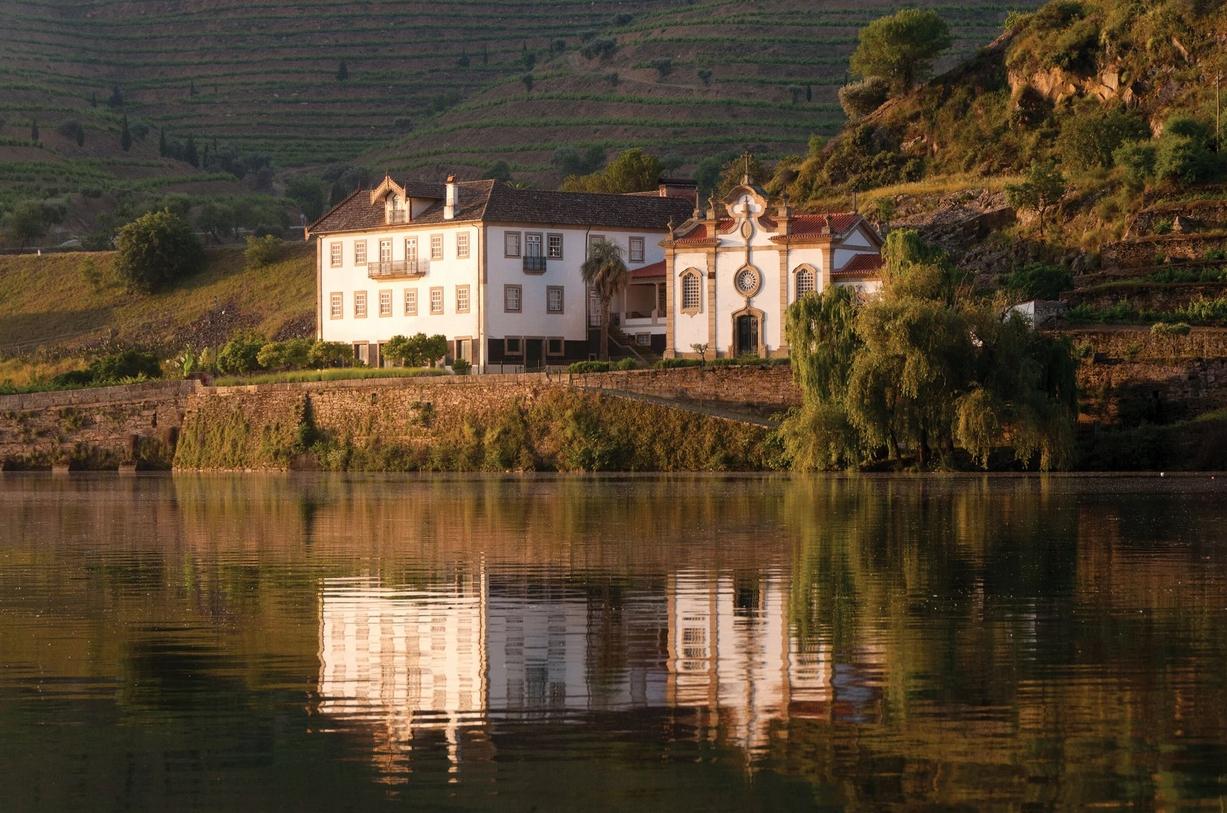Understated Extremes (Quinta do Vesuvio Recent Releases)

“We are very much at an extreme viticultural zone, [with a geography that is] exceptionally difficult to farm. Our yields are some of the lowest in the world. We are already working very much on what are the limits of viticultural production.”
You can take the Symington out of Britain, butt you can’t take the British out of the Symington, apparently. In this case, I’m speaking about Charles Symington, who earlier this year, along with enologist Mariana Brito, led an online tasting of samples from “perhaps our most emblematic property, and one of the most historic properties of the Douro” (as Symington put it): Quinta do Vesuvio.
Symington describes the extreme farming challenges of Quinta do Vesuvio with characteristic British understatement. Mentions of Vesuvio date back to the 1500s. Initial plantings in the 1800s had about 500 people working on them, so its iconic schist terraces were set up within just four years. Symington has more than doubled the plantings in the three decades since they purchased Vesuvio Vesuvio in 1989. “We’re lucky and fortunate to have plantings of monovarietals since the 1970s,” noted Symington: some of the oldest such plantings in the Douro.
Symington’s understatement seems to have rubbed off on winemaker Mariana Brito, who Douro noted that their vines are planted far inland, in a spot where “mechanization is very challenging”. I would add that anyone who wanted to drive a tractor on the property must have some sort of death-wish. Our tasting focused on wines sourced from the Douro Superior, which is the furthest inland subregion of the Douro and as such experiences its most continental-like climate. “The altitude can vary from 100 meters near the riverbank, to 470 meters at the highest point,” Brito mentioned, so they enjoy a number of micro terroirs in their plantings.


Its first still wines were produced in 2007, and its just-over 130 ha of vines are primarily planted with indigenous Portuguese varieties. “The higher-line vineyards that we planted, were planted specifically to creating table wines,” explained Symington. “We’ve taken advantage of the higher-lying areas of the property” to capture more freshness in the grapes. Soils there are less acidic than in much of the rest of the Douro, and the plantings are north-facing—both of which are fairly unique for the region. Combined with the altitude, this lets them create “wines that are very ripe on the one hand, but are very balanced and concentrated on the other. I think the [still] wines have been consistently improving through experience.”
As you’ll read in a moment or two, I was inclined to agree (maybe Symington’s understatement is rubbing off on me, as well)…

2020 Quinta do Vesuvio ‘Comboio do Vesuvio’, Douro, $27
There has been a station on the main line Douro railroad at Quinta do Vesuvio since 1887, and the trains (comboio) are, apparently, still running. This blend of 35{83994d7454f8ce68441ea8152244c292227c3db19076e7622c8f5ff92141c35a} Touriga Franca, 35{83994d7454f8ce68441ea8152244c292227c3db19076e7622c8f5ff92141c35a} Touriga Nacional, and 30{83994d7454f8ce68441ea8152244c292227c3db19076e7622c8f5ff92141c35a} Tinta Roriz is unoaked, and hails from a vintage that Symington described as having “some of the most extreme conditions” of heat and drought. The spices are dried and very deep on the nose, coming off as almost dusty. Dried violets and roses start to peek out, too. There is plummy depth to the fruit on the palate, but you don’t really feel the 14.5{83994d7454f8ce68441ea8152244c292227c3db19076e7622c8f5ff92141c35a} abv here, thanks to a hefty amount of acidity, and an even larger amount of strawberry and cherry fruit lifting up the palate. This is spicy and bright, with red berries dominating, before giving way to more spices and hints of leathery tannins on the finish. This is drinking deliciously well right now.

2022 Quinta do Vesuvio Pombal do Vesuvio, Douro, $35
One of the main components of this red is sourced from terraced vineyards surrounding an ancient dovecote (or pombal) planted mostly to Touriga Nacional. Touriga Franca from the Vale da Teja and Minas vineyards also makes it into the blend, along with bits of Tinta Amarela from the Quinta Nova vineyard, and a smattering of Alicante Bouschet. Charles Symington cites 2022 as “very unusual year for the Douro” which was “quite cool” both in the Spring and Summer months, creating “a very interesting situation” of gradual maturation. Cooler nights helped the grapes develop structure and acidity. Floral, lovely, and spicy, the red fruits on the nose mingle with hints of black and blue plums. You can smell the freshness and brightness from the very first sniff. There’s a minty note as well, almost resinous, and a bit of drier baking spices. The mouthfeel is irresistibly tasty, true to the nose with the same mingling of fruits and spices, lingering with a bit of toast, dried herbs, wild strawberry, and black raspberry. Certainly this could please a crowd, but it is even more a statement of the lovely elegance that the Douro can achieve in fresher vintages.



2021 Quinta do Vesuvio Tinto, Douro, $100
Their flagship still red, this is a result of selective harvesting and multiple sorting passes (“a super selection” according to Symington), and represents about 2{83994d7454f8ce68441ea8152244c292227c3db19076e7622c8f5ff92141c35a} of their production, ending up at 58{83994d7454f8ce68441ea8152244c292227c3db19076e7622c8f5ff92141c35a} Touriga Franca, 40{83994d7454f8ce68441ea8152244c292227c3db19076e7622c8f5ff92141c35a} Touriga Nacional, and 2{83994d7454f8ce68441ea8152244c292227c3db19076e7622c8f5ff92141c35a} Tinta Amarela. Wow… lots of rose action on the nose, and it’s pure, intense, and fantastic. Spicy red plums then emerge, along with dried herbs (thyme), a bit of cedar, white and black pepper, licorice, and violets. Again, this vintage is emphasizing elegance, and this 2021 has that in spades. The texture has elements that are structured and chewy, the red berry fruits are transparent in the best ways, and it gets complex with tobacco, cocoa, black plum, and linear freshness. This will likely evolve slowly and evenly, but is absolutely charming (and, at turns, stunning) right now.

2022 Quinta do Vesuvio Single Quinta Vintage Port, Portugal, $NA
Due to Covid, the ’20 and ’21 vintage Ports were not produced at Vesuvio. This `22 was taken from a cask sample (see inset photo), and comes from “another unusual year” for the Douro, as described by Symington. “We had three months without any rain at all” before the vintage, and July temperatures set a heat record (over 116F). This created smaller bunches and smaller berries, with more intensity, and turned into “a very early vintage. Considering how hot it was and how dry… this wine is showing beautifully.” Whoa. I have long thought that their VPs are among the better bargains in Port, and this is no exception. Having said that, this 2021 is an outlier in some ways for Vesuvio. The lavender and resin are almost overwhelmingly dominant on the nose at first. Everything is intense here: the power, the floral action, the dark berry compote fruitiness, and the structure. It feels luscious already, and while not exactly syrupy, you can feel the almost sticky ripeness on the palate. Of course, there is good freshness, peppery spices, and minerality (this is a Vesuvio, after all), but daaaammmnnnn, you need to like them deep and muscular to get along with this vintage.
Cheers!
